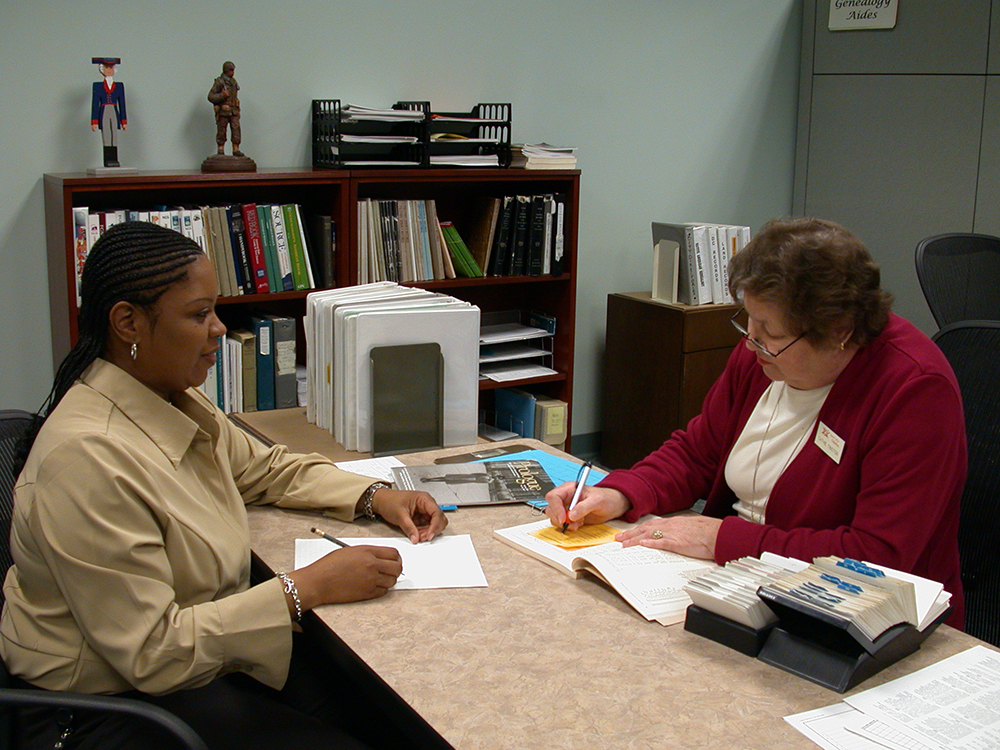
Providing Customer Service of the Highest Order
Summer 2004, Vol. 36, No. 2
John W. Carlin
Archivist of the United States
The stately National Archives Building in downtown Washington has always been a symbol for the National Archives and Records Administration's role as the nation's recordkeeper. Now we want to make it a model for providing quality service to you, our customers.
As many of you know, in this building, now undergoing a top-to-bottom renovation, we house the nation's founding documents, the Charters of Freedom. But you may not know that this building is also the home to our country's preeminent resources for professional genealogists and ordinary Americans tracing their ancestry. These older, mostly pre-1900 records that provide important and crucial genealogical information are available in our new Research Center.
But for us at NARA, the Research Center is something more. It is here where we want to have customer service standards of the highest level. That's why we decided to use the occasion of the renovation to upgrade and update this facility to respond to the new needs of researchers and the way genealogical research is done today.
The aim was to create the setting for an integrated approach to research—in which customers could use original records as well as supplemental information from public web sites, our own library, and our staff experts.
When we officially opened the Research Center in October 2003, we took a giant step toward providing our customers with a much more rewarding, efficient, and pleasant visit.
Initially, we focused mainly on the physical infrastructure—getting enough quality space.
We consolidated into this one location, just a few steps off busy Pennsylvania Avenue, many of the research services and resources that had been on upper floors of the building and even added a few new services and resources along the way.
Now, all in one convenient location are the Microfilm Research Room, the Genealogy Consultation Room, a new Military Service Reading Room (opening this summer), the Textual Records Consultation Room, the Finding Aids Room, and our own library, the Archives Library Information Center.
As we consolidated most of our research services on the first floor, we added more public access computers and provided more space for customers to consult with staff. And we added some amenities for our customers, such as more lockers and nearby restrooms.
Since the opening, researchers have expressed approval of the improvements and look forward to further changes.
Now, we are in Phase II of our effort to enhance the research services at the National Archives Building.
In this phase, we are refining the physical layout and improving day-to-day operations and customer service—things you should already notice in your visit to the Center. Already, we are well along in carrying out our Phase II plan.
The Microfilm Reading Room will be reconfigured to make it more customer friendly. We're improving access to equipment and NARA staff there, and we're adjusting the lighting. And we've moved the indexes for the U.S. census records, dating from 1790, to this room—making them right at hand for microfilm researchers.
We've also added more equipment that researchers need for their work. An increased number of public access computers await researchers who need to supplement their document search with work on our web site and other web sites. More duplicating machines stand ready for customers so they won't have to wait as long to copy the documents they need. New microfilm scanners are planned for the Microfilm Reading Room. New resources, both online and in print, as well as new computer software, will be available for use by customers in their research.
By late summer, we expect to have furnished the Grand Lobby with comfortable seating and tables for researchers to work and to confer with colleagues. We've stationed staff at the front desk in the lobby so all our customers are welcomed and provided with directions on where they need to go for their particular research needs. To better serve external customers, we also added more telephone lines, so that all callers will be connected to a live operator.
Further plans for Phase II later this year involve more extensive modifications and additions, in and around the Research Center, to make your surroundings even more pleasant and inviting when you come to do your research.
But we're not only moving things around and adding furniture, we're adding staff. And we're intensifying and integrating staff, volunteer, and researcher training to better ensure a widespread knowledge about the many and varied ways to conduct genealogy research.
The improvements we're instituting in our Research Center are not only a response to customer needs and demands but a recognition of the fact that research, especially genealogical research, is now a multimedia affair. Genealogists still rely on original records in our holdings, such as the many military and pension files and the census records back to 1790. But now they are also making use of various research sites on the Internet, which helps to both broaden and speed research efforts.
At the National Archives, we welcome you, our customers, whether you're visiting us by phone at 1-866-272-6272, online, or in person in Washington or at any of our regional locations around the country.
However you visit, you'll find staff and facilities ready to help you find any record you need as quickly as possible.
The records we keep are yours, and we want to provide you, their owner and our customer, with the highest possible service.
